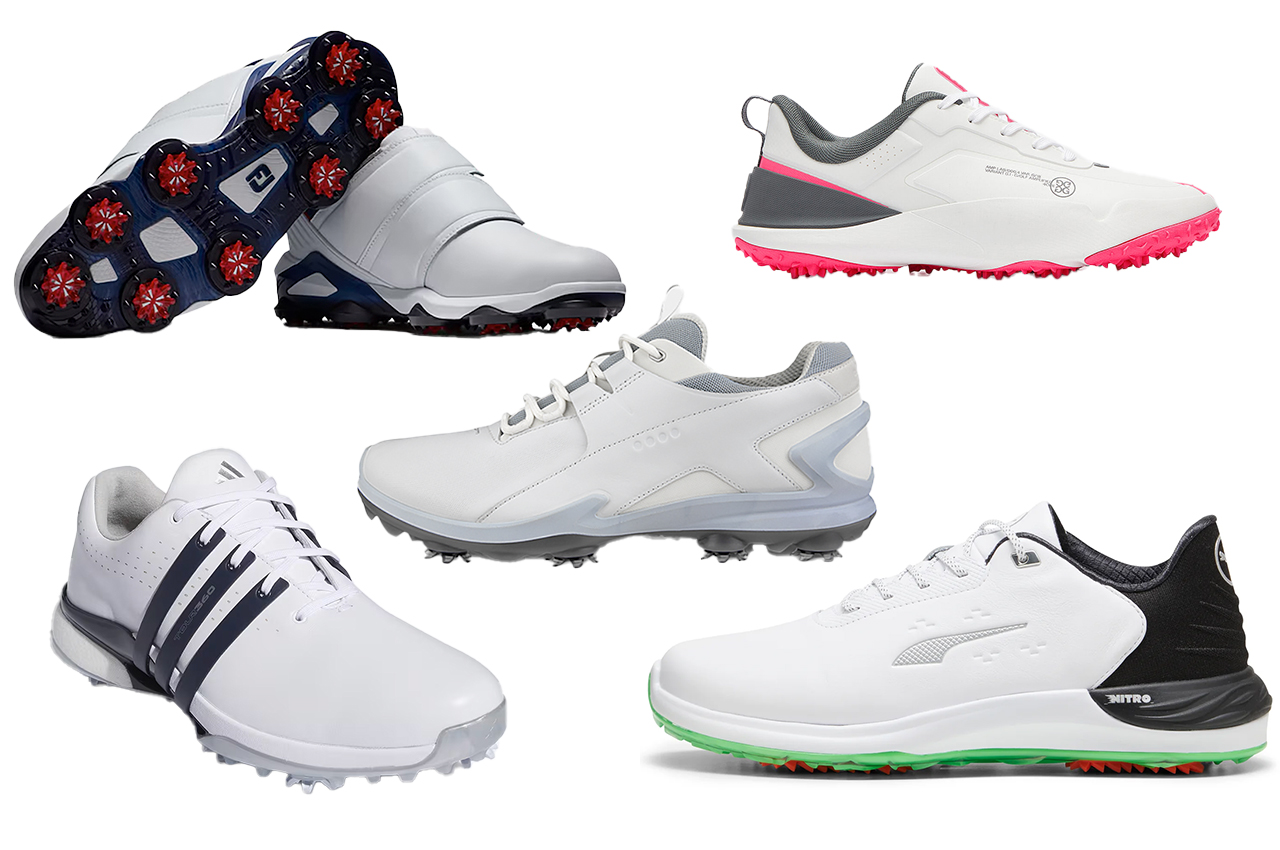As the leaves turn gold and red and the temperatures start to dip, golfers everywhere face a familiar dilemma: what’s the right footwear for cool, wet conditions? Autumn rounds can be spectacular, but they can also bring soggy fairways, dew-covered rough, and enough mud to make even the sturdiest golfer slip up. Choosing the wrong shoes can turn what should be an enjoyable day on the course into a soggy, slippery slog. So, let’s dive into what you need from golf shoes when fall conditions hit and how to pick the right pair for your game.
Spiked vs. Spikeless: Which One Wins in Wet Conditions?
One of the first decisions you’ll need to make is whether to lace up a pair of spiked or spikeless shoes. Both have their merits, but in slick, wet conditions, the differences can be critical.
Spiked Shoes: These are the traditional, go-to shoes for golfers who place a premium on traction, especially when there’s a chance your feet might shift while making your swing. The extra grip cleats can help keep your feet planted in the turf, which can lead to more consistent ballstriking and a feeling of stability throughout your swing. Plus, if you tend to play on hilly or uneven courses, the added grip can help you stay balanced when the ground is soft and muddy.
If cleated shoes have a downside, it is they are often heavier, and the housing designed to hold the replaceable cleats adds a rigid area to the outsole, which can make the shoes less comfortable on long walks.
Spikeless Shoes: More versatile and often designed with comfort in mind, spikeless shoes have made huge strides in recent years. Modern designs use innovative sole patterns and traction elements to give you grip without the bulk of cleats, and they tend to be lighter and more flexible. This makes spikeless shoes a popular choice for golfers who typically walk 18 holes or players who want to wear the same shoes from the parking lot to the course and back again.
However, while today’s spikeless shoes are much better in wet conditions than they used to be, they can still be prone to slippage if the course is particularly slick. If you’re playing early in the morning or after a long, steady rain, spikeless shoes won’t dig into the ground like their spiked counterparts. And, as the traction elements wear over time, they can’t be replaced like the re-moveable cleats on spiked shoes.
Waterproofing: Keeping the Damp Out
The most important feature for autumn golf footwear is waterproofing. When the course is damp, and there’s a cold breeze, the last thing you want is to spend four hours with soggy socks and numb toes.
Waterproof materials are not created equally, so look for shoes that use materials like Gore-Tex or other proprietary waterproof linings and that comes with a one- or two-year waterproof warranty. That is a signal the manufacturer is confident its shoes will keep you dry. If you see footwear that is maked “water-resistant,” think of it like a rain jacket that will keep you from getting wet in a light drizzle, but not in a downpour.
The bottom line is this: If you play regularly in damp conditions, you want waterproof golf shoes.
View Golfweek’s best waterproof golf shoes
Comfort and Support: It’s a Long Walk Out There
You never want to walk 18 holes in uncomfortable shoes, but when you are confronted by wet, uneven lies, slippery slopes and soggy rough, it can all take a toll on your legs and feet. Make sure your shoes have adequate arch support, a secure fit, and enough cushioning to handle whatever the course throws at you.
However, the more cushioning a shoe has, the more likely it is to elevate your feet, which can reduce stability. Manufacturers work hard to develop foams and soft materials that add comfort while keeping your feet low to the ground, so look for models that feature a wider base or extra midsole support to keep your feet steady as you swing.
Attention to Details
Too many golfers get caught up in colors and styles instead of focusing on the functionality of their footwear. We all want to look good on the course, but don’t overlook little things like padded collars and tongues that can enhance comfort, lacing systems that are easy to use and contoured footbeds that can enhance comfort.
Below is a selection of shoes that should serve you well in autumn conditions.

